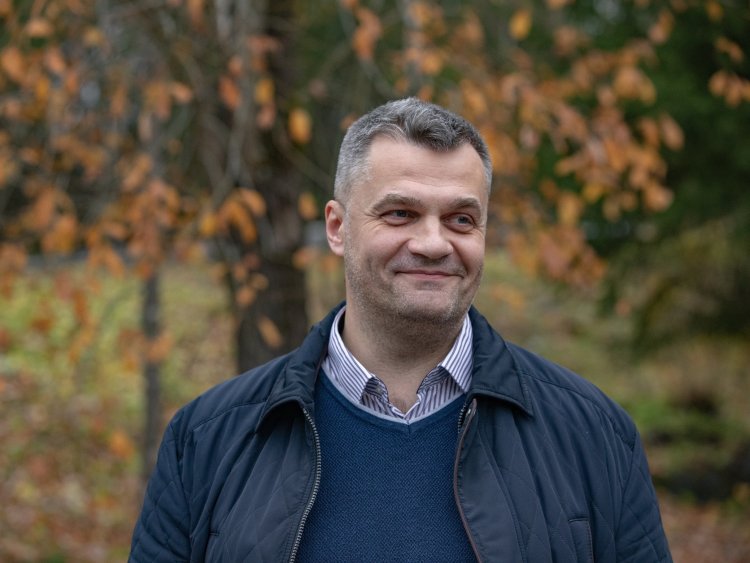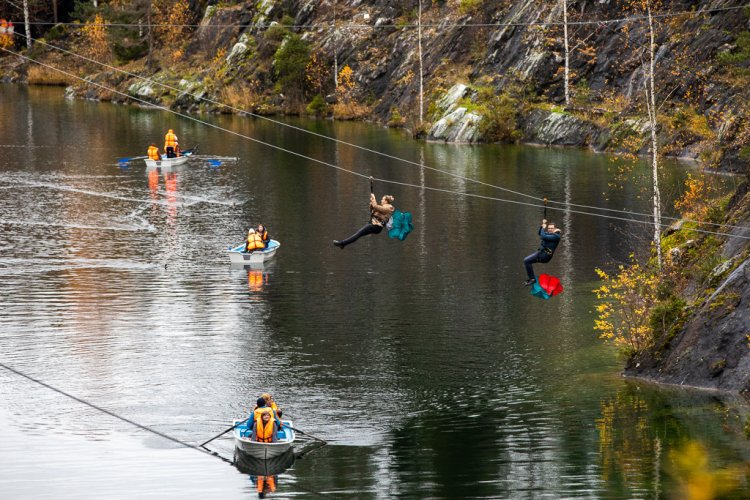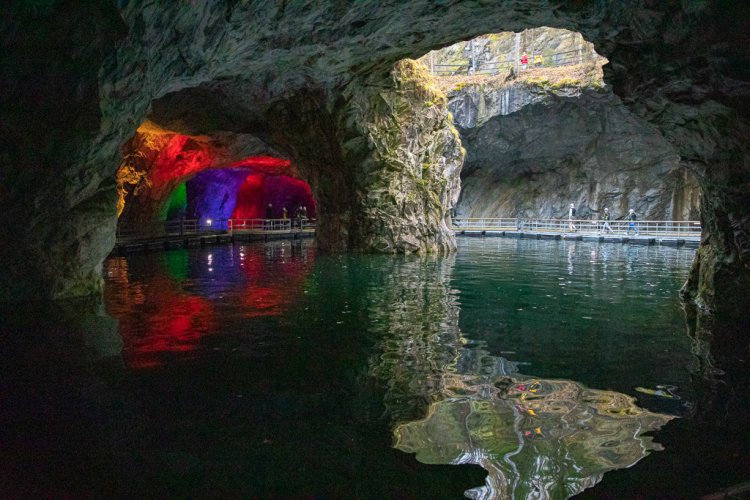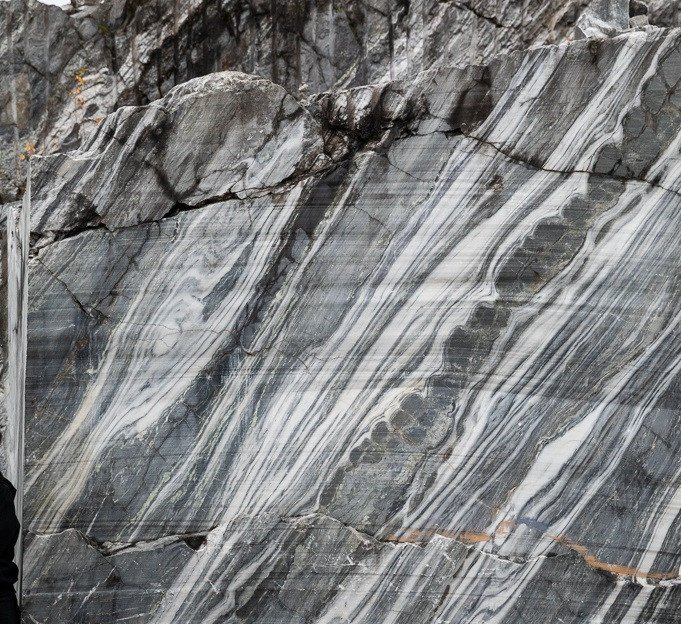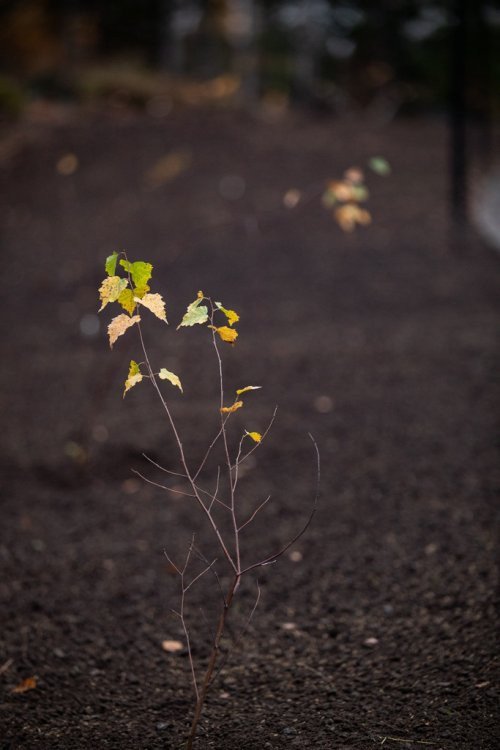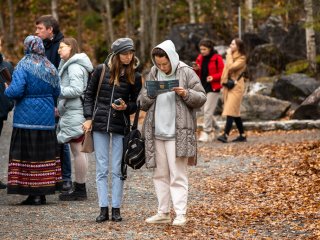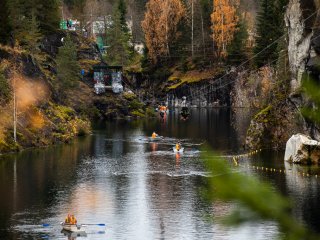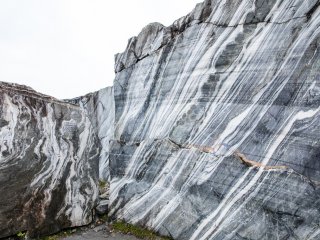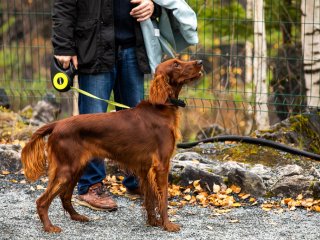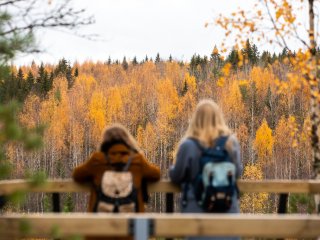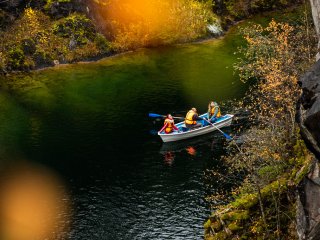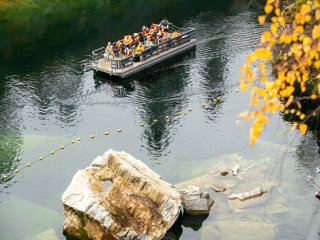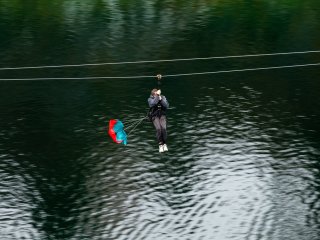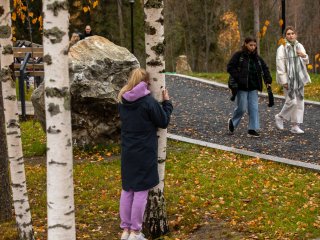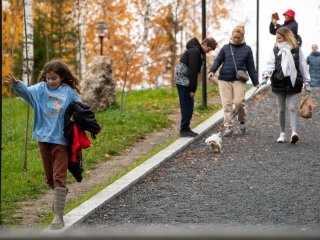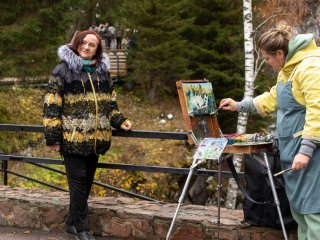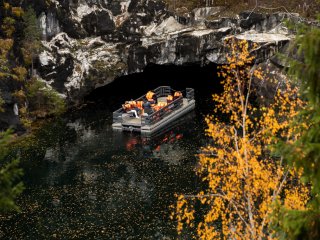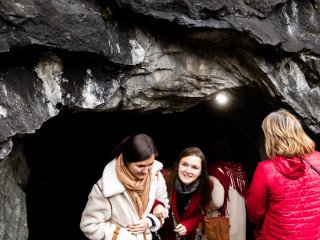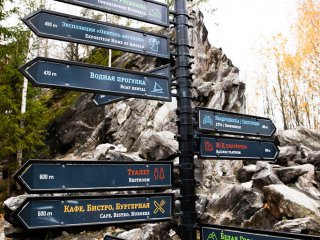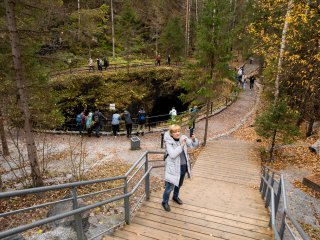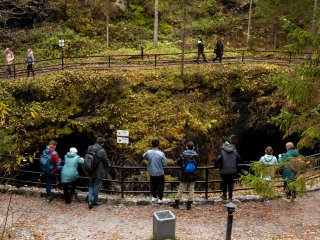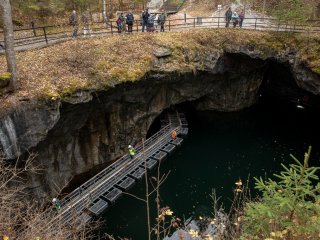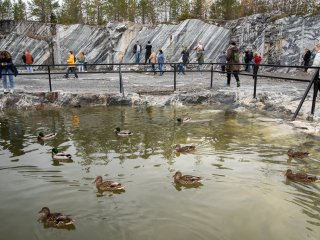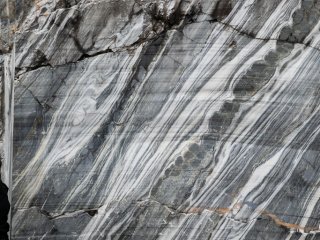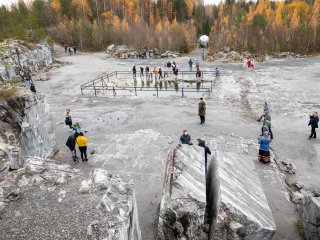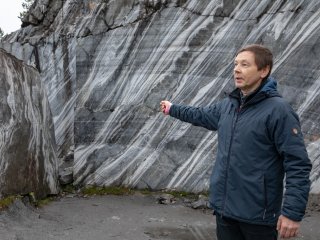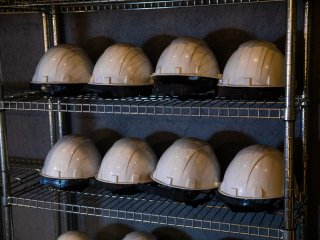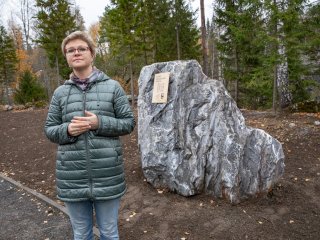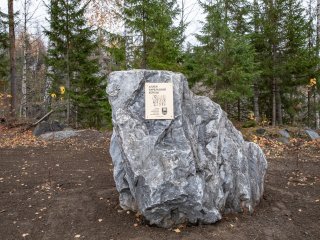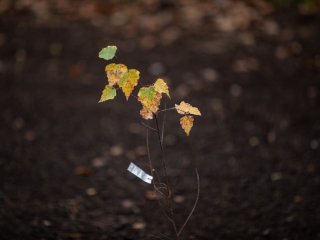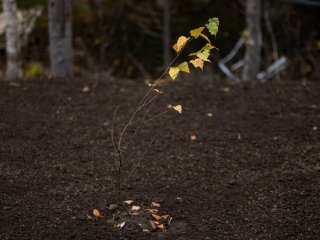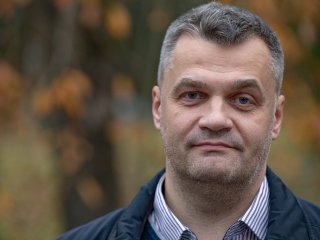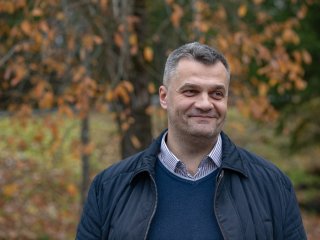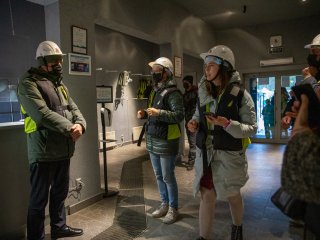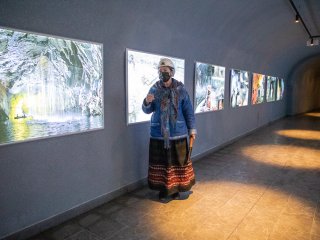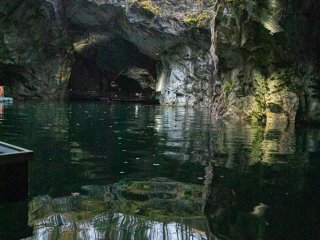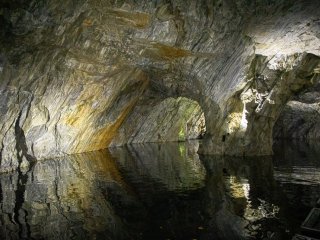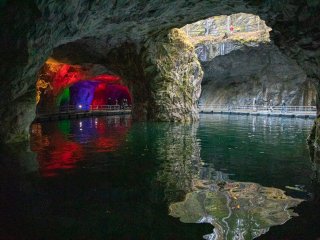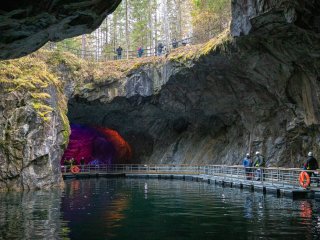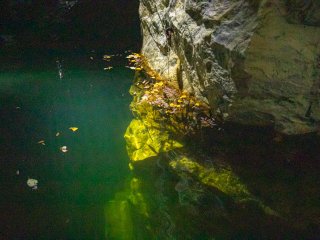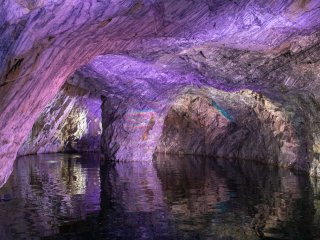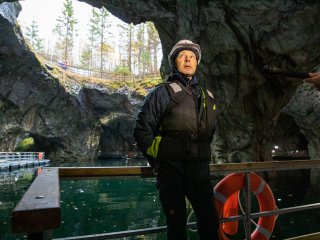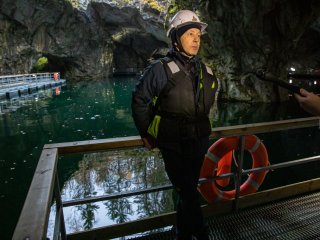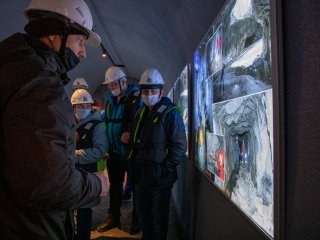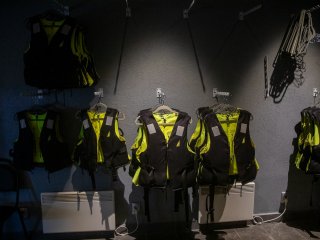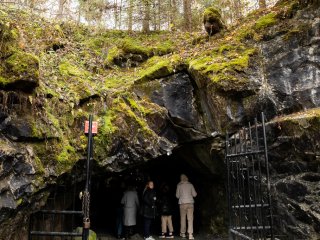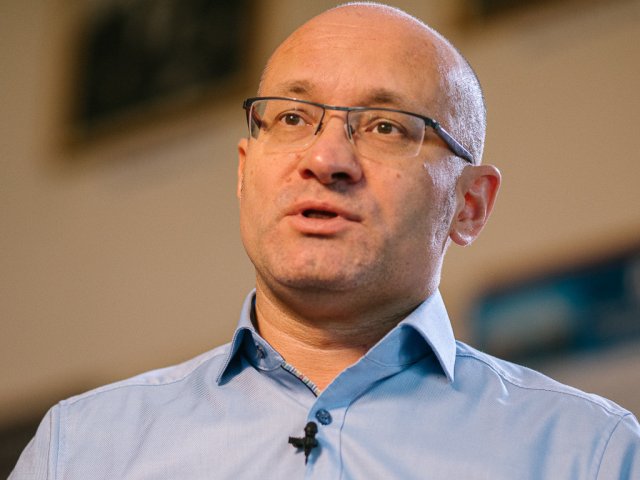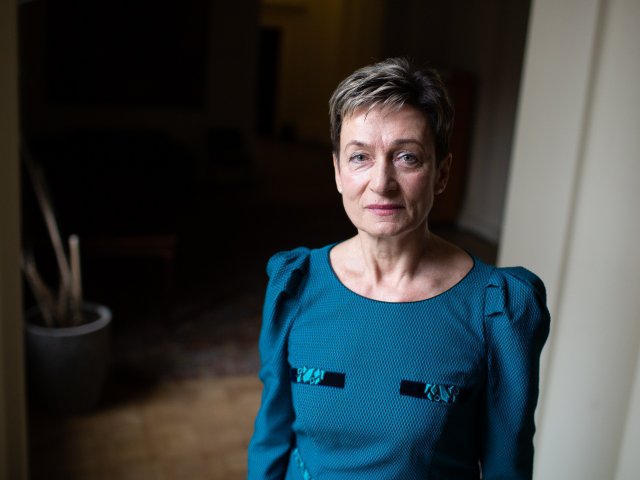Scientific Russia publishes the final article of the series dedicated to the unique science of the Republic of Karelia. Earlier we have already talked about one of the oldest Russian nature reserves, Kivach, as well as about the Girvas Paleovolcano and Karelian petroglyphs, UNESCO World Heritage Sites. Today we will talk about the Ruskeala Mountain Park, which is of great interest to geologists because here you can see Precambrian rocks (note: Precambrian, or Cryptozoic, was the geological period in the history of the Earth from 540 million to 4.5 billion years ago), as well as underground lakes, grottoes, and caves.
Ruskeala is the only mountain park in our country. It was opened in 2005 on the site of a large quarry, where the famous Ruskeala marble was mined in the 18th century. Local marble of grayish-white color was used in the construction of historical buildings of Saint Petersburg and the palace suburbs. The Saint Isaac’s Cathedral is lined with Ruskeala marble, the floors of the Kazan Cathedral are paved with it, the windowsills of the Hermitage are made of this marble; the windows of the Marble Palace and the facade of the Saint Michael’s Castle, the underground halls of the Ladozhskaya and Primorskaya metro stations in Saint Petersburg are also framed with Ruskeala marble.
Every year, the Ruskeala Mountain Park, which occupies 32 hectares, is visited by hundreds of thousands of tourists. It has the status of a natural and historical-cultural complex protected by the state. The Park was founded and maintained with private funds. Photo: Nikolay Mokhnachov / Scientific Russia
The length of the Ruskeala quarry is 450 meters, and the depth reaches 50 meters. In 2021, about half a million people from Russia and abroad visited the mountain park. People come here to go boating or bungee jumping, to walk through the cold and mysterious caves, and just to admire nature. However, local scientists are primarily interested in the geology of this unusual mountain park, where you can find rock samples from the distant Precambrian. This period is often called the “childhood” of planet Earth. It was in the Precambrian that the Earth’s crust, oceans, free oxygen, and the first living organisms appeared on our planet. The Precambrian can be called a kind of springboard from which life once started.
Ruskeala. Man-made labyrinths of marble tunnels lead to a large, pillared hall and an underground lake. Photo: Nikolay Mokhnachov / Scientific Russia
Scientists of the Karelian Research Centre of the Russian Academy of Sciences spend a lot of time in Ruskeala studying the history of the early Earth.
“Ruskeala is located in the southeastern part of the Baltic (Fennoscandian) shields of the Precambrian age. Precambrian rocks of the Paleoproterozoic age in Ruskeala are exposed on the day surface, unlike, for example, the Russian Plate, where the basement rocks are overlain by a thick layer of Phanerozoic deposits. Here, the Precambrian is practically on the surface and available for research. […] For Russian scientists, due to the COVID-19 pandemic, Ruskeala now remains one of the most accessible and interesting objects for studying the Precambrian. […] Ruskeala marbles are crushed into an anticline fold and skarned, which led to the formation of silicate minerals: amphibole, chlorite, serpentine, diopside, and quartz, which give a peculiar yellowish and greenish additional color,” said Andrey Ivanov, a researcher at the Institute of Geology of the KarRC RAS.
A fragment of the wall of the “Italian” quarry. The northern part of the deposit, where in the 1980s marble was mined for facing stone by rope method. A complex interlayer of steeply falling layers of calcite and dolomite marble with a boudinaged (harder) layer of dark gray in the central part, indicating a significant tectonic elaboration of marble. Photo: Nikolay Mokhnachov / Scientific Russia
BSUIN (Baltic Sea Underground Innovation Network), a well-known international project in which scientists from the KarRC RAS took part, includes a network of underground laboratories created to exchange experience in using the abandoned underground space after the completion of mining in them. Thanks to the network of such laboratories, scientists can conduct a wide variety of studies. Specialists of the KarRC RAS, under the leadership of the Deputy Director of the Institute of Geology Vitaly Aleksandrovich Shekov, presented their virtual underground laboratory within the framework of the project, and also developed a network of base stations for placing a laser rangefinder to study the stability of the roof of an underground mine.
Andrey Ivanov, a researcher at the Institute of Geology of the KarRC RAS. Photo: Nikolay Mokhnachov / Scientific Russia
“With a laser rangefinder, we were measuring the distance to potentially dangerous planes and recording the data in a special log. In case of significant changes in the measurement data of a specific plane, a decision on further actions was being made.
For example, in one place, when exiting an underground tunnel, a deviation from the initial measurement by several centimeters was recorded. A visual inspection revealed a dangerous crack opening in the marble layer: essentially, a block of marble was hanging over the tourist path. It was decided to destroy (bring down) this block,” says Andrey Ivanov.
Calcite marble kilns for lime production, once operating in Ruskeala. The first kiln was built in 1895. The last kiln was extinguished in 1995, at that time this territory already belonged to Russia. Photo: Nikolay Mokhnachov / Scientific Russia
Geophysical work was also carried out in Ruskeala to study the volumetric tectonic disturbance of marble in the space above the underground route (above the tunnel). The marble of the Ruskeala deposit is strongly fractured. The ecological and technogenic load on the rocks of the deposit can activate the relaxation processes along the planes of cracks. It is possible to predict and eliminate these movements only by engaging in regular monitoring, using various systems and methods designed for this, Andrei Ivanov believes.
“Nevertheless, our system and our work have revealed that the environment in the underground space of Ruskeala is heterogeneous. In the process of tectonic disturbances of the marble thickness, cracks formed in the hinge zone of the anticline, which have an orthogonal and steeply inclined orientation to the primary layering, which also needs to be studied,” the scientist noted.
A young Karelian birch planted in the Ruskeala park. Photo: Nikolay Mokhnachov / Scientific Russia
What other interest does Ruskeala have for science? Of course, it is impossible not to recall the famous Karelian birch, whose seedlings, thanks to the scientists of the KarRC RAS, we can see here on a special alley dedicated to this unique tree.
The Karelian birch (Betula pendula var. carelica) has a unique patterned structure. Its wood, which resembles marble in its pattern, is considered the most decorative wood of the North, and it costs a lot. The origin of the unique patterned structure has not yet been established, there is no consensus on how the Karelian birch reproduces, and its complete genome is unknown. KarRC RAS scientists are looking for answers to all these questions. They are also trying to preserve the population of the endangered Karelian birch in the region. Natalia Fokina, Scientific Secretary of the KarRC RAS, told us about this:
“Last September, we laid the Karelian birch alley in the Ruskeala Mountain Park. Thirty seedlings were planted using the technology of microclonal reproduction (cloning from the mother plant) in the laboratory of forest biotechnologies of the Karelian Research Centre. Thanks to this technology, plants from the test tube are planted first in greenhouses, and from greenhouses – already in the ground. Most of our seedlings are only one year old, some are two, and we really hope that they will take root. Each seedling has its specific genotype. If you look closely, you will notice that each plant has its own “passport” attached to the trunk, where special codes denoting this genotype are recorded. Among these seedlings, there are genotypes from Denmark, the Republic of Belarus, and from different regions of Russia. We really hope that the conditions for our birches will be favorable, that they will grow beautiful and will delight the guests of the park.”
To preserve and increase the natural resources of the region, including the Karelian birch, is the task facing the scientists of the KarRC RAS for the coming decades. Also, in the near future, scientists plan to study the Arctic as one of the priorities of the Karelian Research Center. A number of new expeditions and studies are planned, which we will definitely tell you about on the Scientific Russia portal. Stay tuned!
Natalia Fokina, Scientific Secretary of the KarRC RAS.
The KarRC RAS: Сooperation with Ruskeala.
Rusceala's caves.
